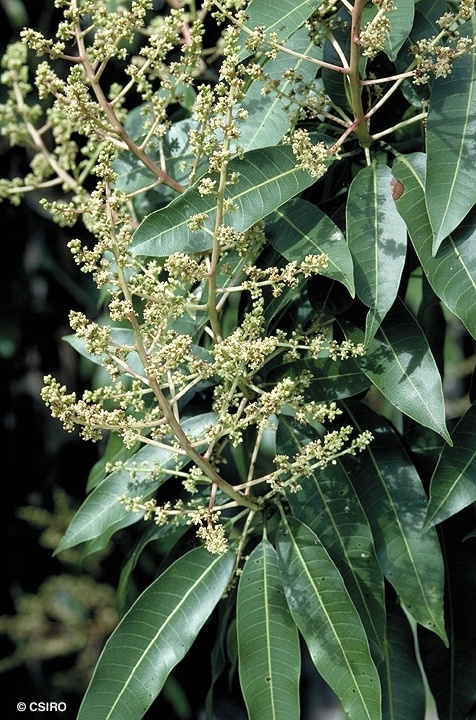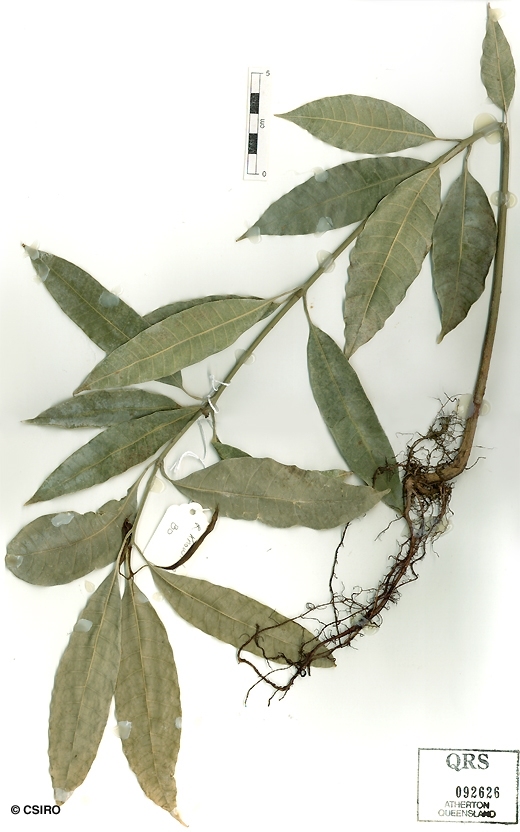Australian Tropical Rainforest Plants - Online edition
Mangifera indica L.








Linnaeus, C. von (1753) Species Plantarum 2: 200. Type: Habitat in India.
Mango, Indian; Common Mango; Indian Mango; Mango; Mango, Common
Blaze odour quite strong and characteristic.
Leaf blades about 14-27 x 3.2-5.5 cm. Freshly broken twigs +/- aromatic. Midrib and main lateral veins raised on the upper surface.
Fruits about 10-15 cm long. Mesocarp fleshy. Endocarp leathery and fibrous. Seed often polyembryonic.
An introduced species originally from the Indian sub-continent but cultivated throughout the tropics and subtropics, now naturalised in WA, NT, CYP, NEQ, CEQ and southwards into NSW. Altitudinal range of naturalised plants from near sea level to 500 m. Grows in open forest, gallery forest, disturbed rain forest and on old farmland.
This species occurs over a wide area in northern Australia. Most occurrences result from human activities but the seeds are also spread by other vectors. Horses and cattle eat the fallen fruit and appear to enjoy them a lot. Horses even spit the seeds out. Scrub bulls can be somewhat protective of what they perceive as their particular trees. This species is one of the best shade trees in northern Australia. Don't camp under trees of this species when they are fruiting as the Flying Foxes (Pteropus spp.) will keep you awake most of the night as they argue and squabble.





